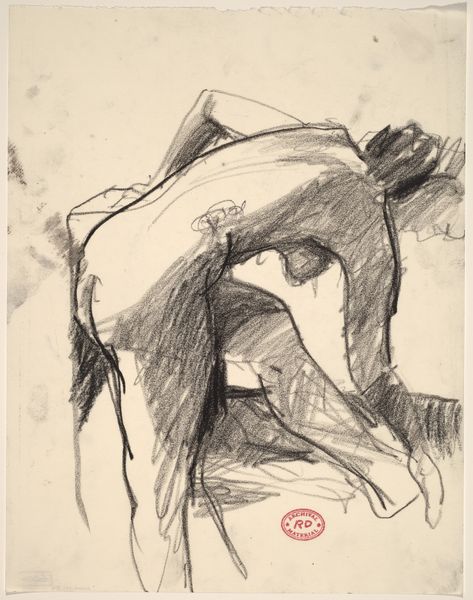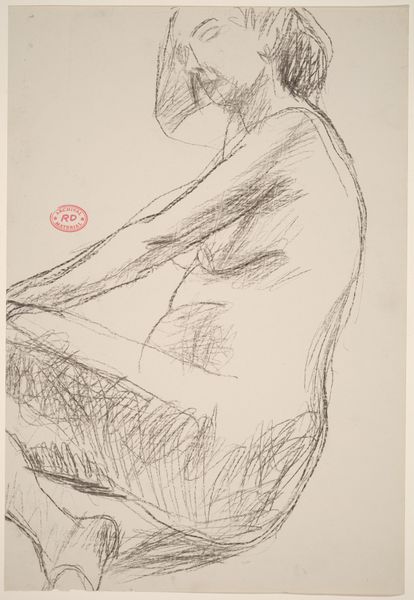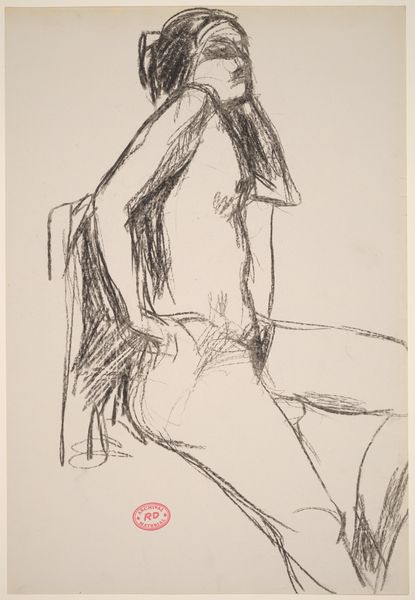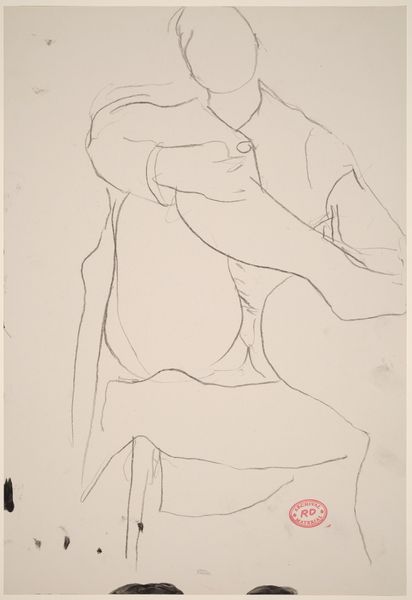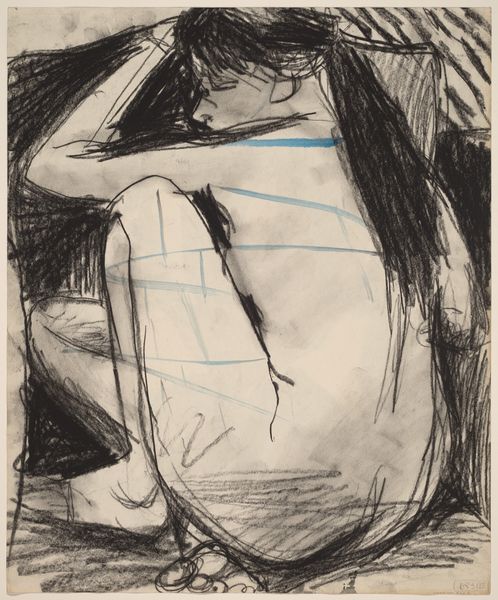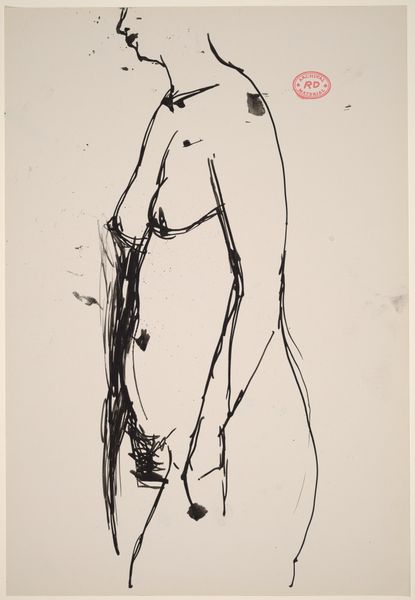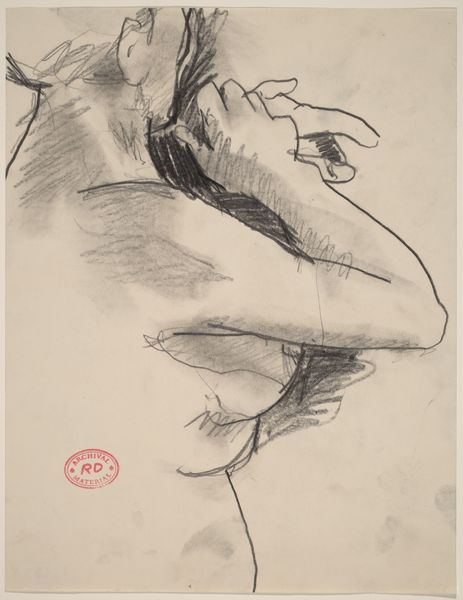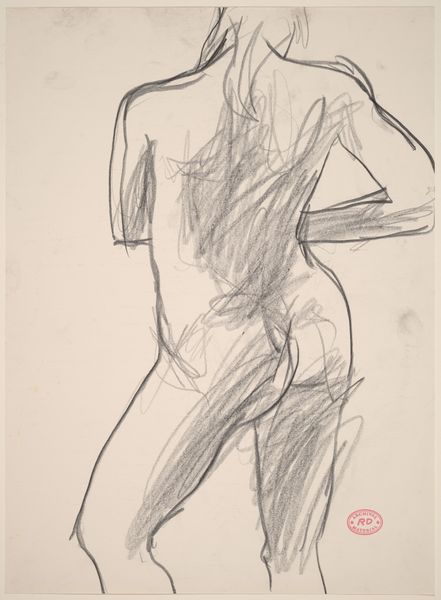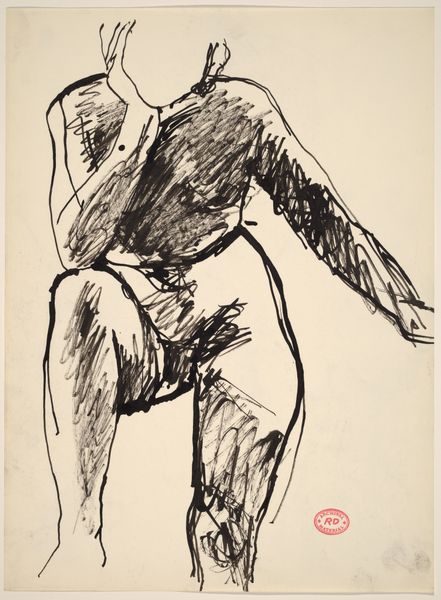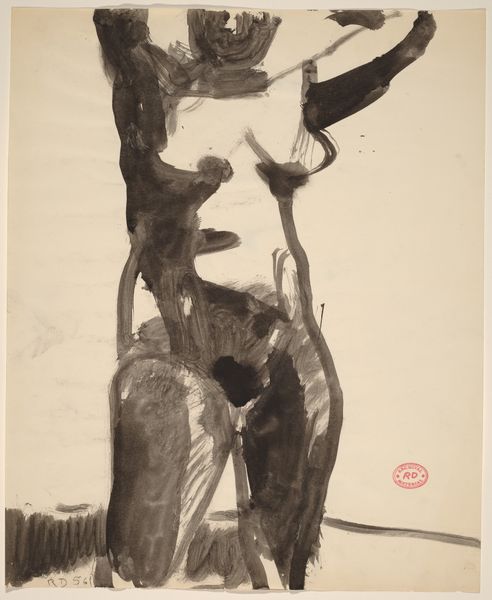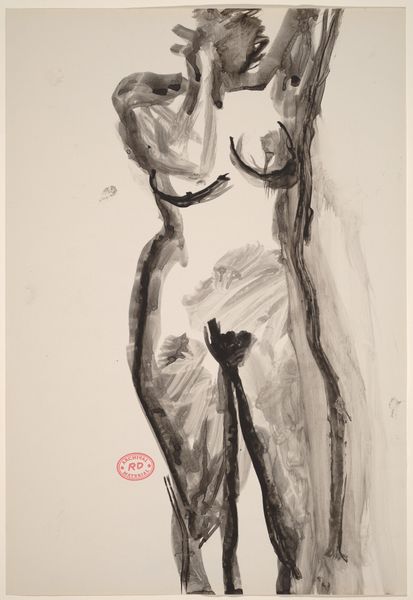![Untitled [female nude with striped bedding] by Richard Diebenkorn](/_next/image?url=https%3A%2F%2Fd2w8kbdekdi1gv.cloudfront.net%2FeyJidWNrZXQiOiAiYXJ0ZXJhLWltYWdlcy1idWNrZXQiLCAia2V5IjogImFydHdvcmtzL2Y4OGE3ZTMzLTkwMTctNDNjYi05NzYzLWI4Yzg2YjI0MjFhOS9mODhhN2UzMy05MDE3LTQzY2ItOTc2My1iOGM4NmIyNDIxYTlfZnVsbC5qcGciLCAiZWRpdHMiOiB7InJlc2l6ZSI6IHsid2lkdGgiOiAxOTIwLCAiaGVpZ2h0IjogMTkyMCwgImZpdCI6ICJpbnNpZGUifX19&w=3840&q=75)
drawing, pencil
#
portrait
#
drawing
#
pencil sketch
#
figuration
#
bay-area-figurative-movement
#
pencil drawing
#
pencil
#
portrait drawing
#
nude
Dimensions: overall: 43.2 x 31.8 cm (17 x 12 1/2 in.)
Copyright: National Gallery of Art: CC0 1.0
Editor: So, this is "Untitled [female nude with striped bedding]" by Richard Diebenkorn, created sometime between 1955 and 1967 using pencil. I'm really drawn to the raw, almost unfinished quality of the line work. It makes me wonder about the process of creation. What catches your eye in this drawing? Curator: Well, the use of simple graphite on paper is significant. It speaks to the accessibility and almost disposable nature of drawing as a medium, a contrast to the subject of the female nude, often loaded with historical baggage and associated with more precious materials. Look at how the lines are laid down, revealing the artist's hand and the immediate choices they're making in the act of creation. Editor: That’s interesting! So, you’re seeing a tension between the subject matter and the material used to depict it? The nudity represented in mass-produced graphite pencil? Curator: Exactly. Consider the socio-economic context. Was Diebenkorn commenting on the objectification of women in a rapidly consumerist society? The striped bedding, a domestic textile, is rendered with the same casual linework as the nude, leveling the symbolic importance and underscoring production. The pencil medium is sold on the open market as any commodity object, ready for anyone to use in creating “fine art,” craft, or for that matter any type of sketch or notation. Editor: I never thought about the class implications of artistic media! It’s also fascinating how the drawing style makes the figure feel less idealized, more like an everyday person. The material is kind of grounding, in a way. Curator: Indeed. The "unfinished" quality that drew you in, speaks to the labour of art making. Rather than striving for a polished, marketable image, the process and the artist's mark become the focal point. It asks us to consider the relationship between artist, model, and viewer in the consumption and creation of images. Editor: I see what you mean. By focusing on the materials and production, Diebenkorn sort of democratizes the subject matter and allows us to focus on art-making process and consumer society. Thanks, I never would have come to this perspective on my own!
Comments
No comments
Be the first to comment and join the conversation on the ultimate creative platform.
